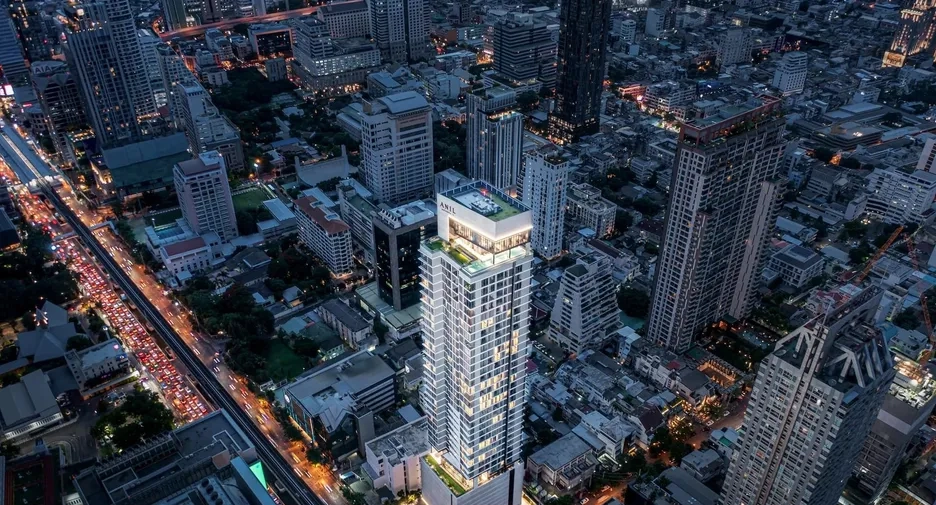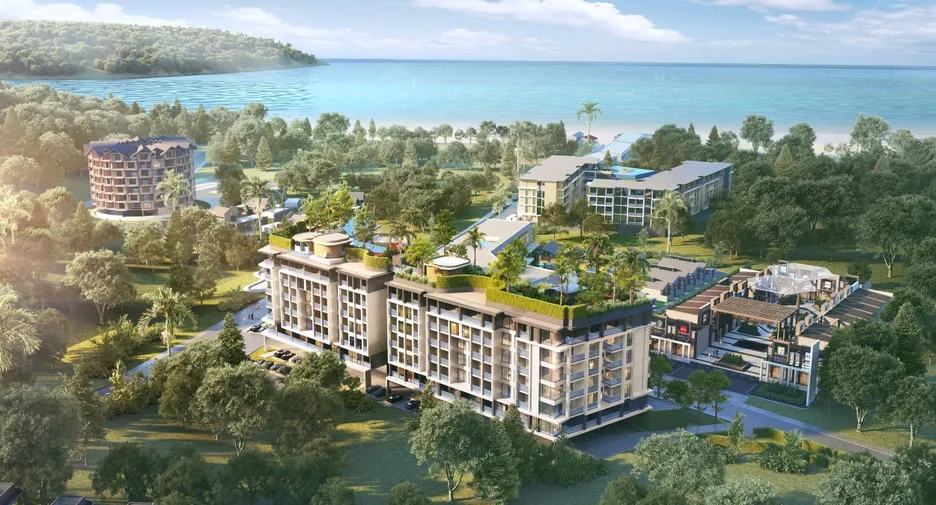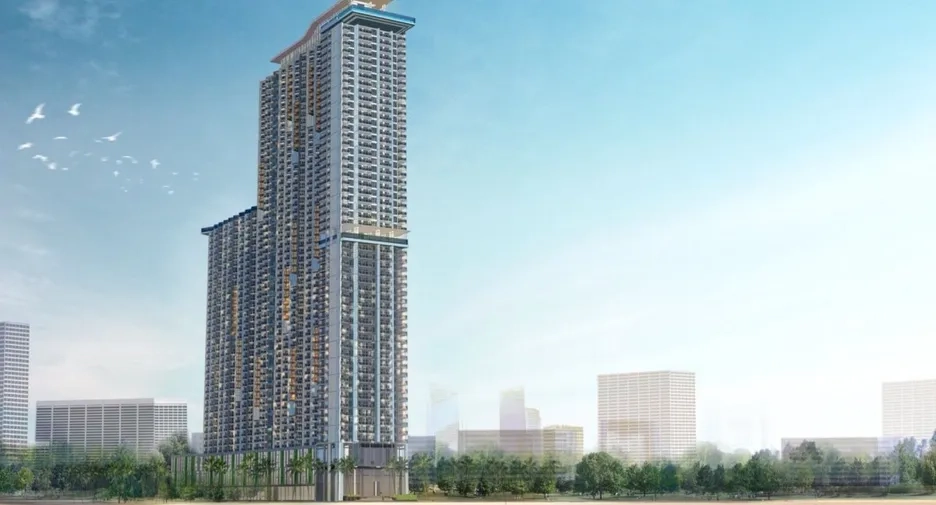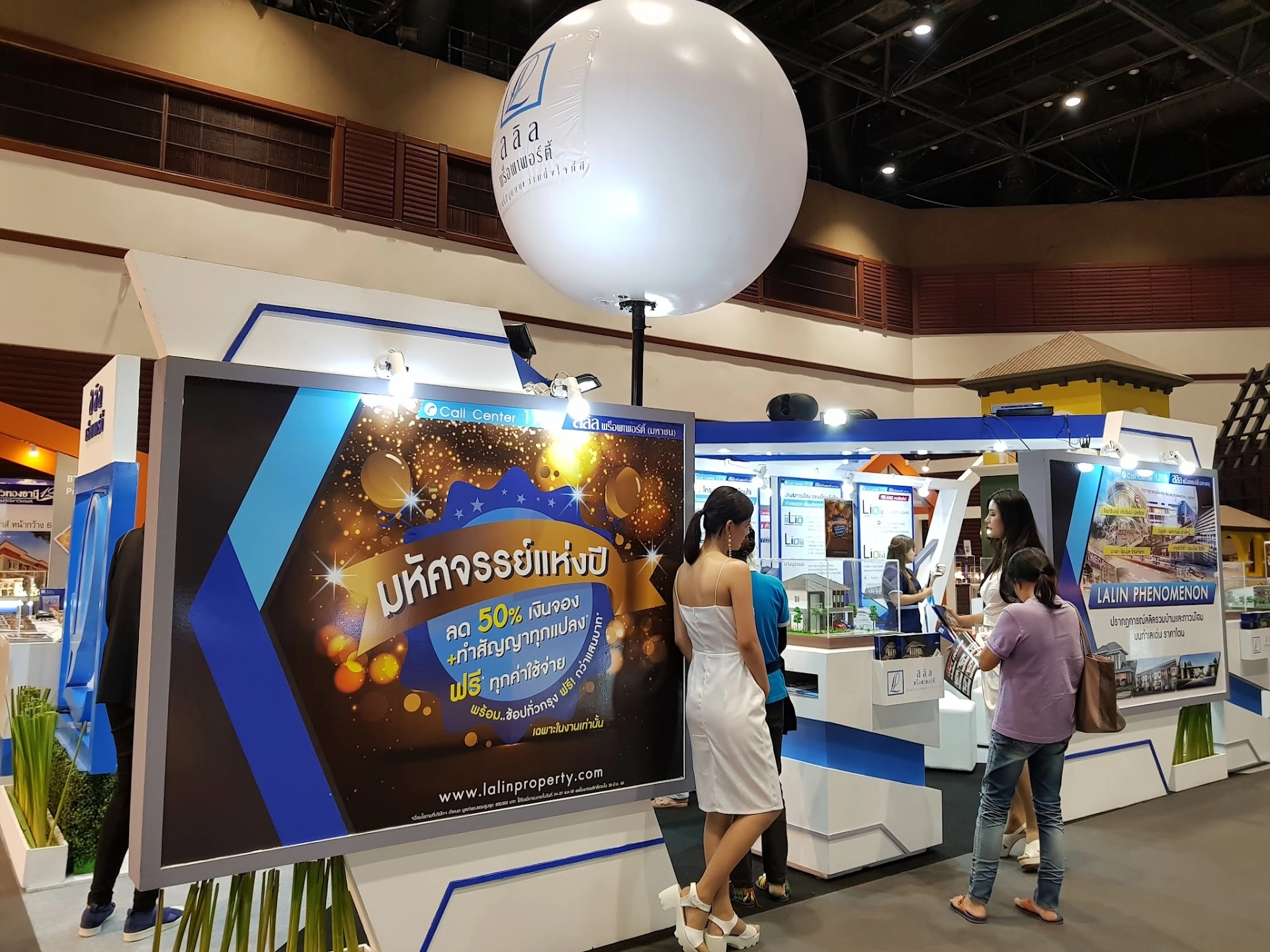Thailand’s property market isn’t being driven by foreigners as headlines suggest. While foreign buyers add liquidity and global attention—accounting for less than 10% of condo transactions and around 6% of total real estate sales—the backbone of demand remains firmly Thai. Drawing on 2025 data from the Real Estate Information Center (REIC), this piece explores who the real foreign buyers are, where they’re investing, and how their influence reshapes hotspots like Phuket and Bangkok. The result is a balanced view of Thailand’s real estate landscape—one where domestic strength anchors the market, and international interest adds diversity and depth.
Table of Contents
Looking Beyond the Headlines
Scroll through the news and you’d think foreigners are driving Thailand’s property boom. The reality is more balanced: Thai nationals remain the backbone of the real estate market, while foreign buyers account for only a limited share.
According to Thailand’s Real Estate Information Center (REIC), foreigners purchased 7,167 condo units in the first half of 2025, worth about ฿28.7 billion. That’s less than 10% of total condo transfers nationwide. In other words, nine out of ten sales are still driven by Thai buyers.
The foreign share, though small, is fascinating — because the mix of nationalities is far more diverse than many expect.

Ownership Basics – The Guardrails on Foreign Demand
One reason foreign buyers remain a minority in Thailand’s property market is that the legal framework places clear guardrails around what they can and can’t purchase. These rules aren’t new, but they shape the demand profile and explain why locals continue to drive the bulk of sales.
Condo Quota – The 49% Ceiling
Condominiums are the most straightforward option for foreigners, but there’s a hard cap: no more than 49% of the saleable floor area in any building can be foreign-owned under freehold title. Once that quota is full, foreign buyers can only purchase units on a leasehold basis. In hot markets like Phuket and Bangkok’s CBD, some projects hit their quotas quickly — which explains why Thai buyers still dominate even in areas with strong foreign demand.
Villas & Land – Leasehold and Company Routes
Foreigners cannot own land freehold in Thailand. Instead, most villa purchases are structured through:
- Leasehold agreements — typically 30 years, with contractual options to extend to 90 years (30+30+30).
- Thai limited companies — a structure where the land is held in a company with Thai shareholders, while the foreign buyer controls operations. This approach requires careful legal setup to avoid nominee risks.
Luxury Options – Branded Residences & Hybrid Models
At the upper end of the market, branded villa and resort-style developments often package long-term leases with built-in rental programs. This appeals to overseas buyers seeking both lifestyle use and income. For example, some branded residences in Phuket offer buyers guaranteed rental returns for the first few years, paired with managed operations that simplify ownership.
The Bottom Line
These ownership restrictions act as a natural stabilizer. They allow foreigners to participate in Thailand’s property market — adding liquidity, driving niche demand, and supporting premium projects — but ensure the bulk of ownership remains with Thai nationals.
👉 For a deeper dive into these structures, see our guide on Foreign Ownership in Thailand: Freehold, Leasehold & Thai Company Options.

Market Share – Small but Significant
Foreign buyers get plenty of attention in Thailand’s property headlines, but the reality is more modest once you look at the numbers.
The national picture.
According to REIC, foreigners purchased 7,167 condo units in the first half of 2025, worth roughly ฿28.7 billion. That sounds impressive, but it represents less than 10% of total condo transfers nationwide. And when you consider Thailand’s broader real estate market — including the much larger volumes of landed housing and townhouses purchased by locals — the foreign share is even smaller, closer to 5–6% of the overall market.
Why it feels bigger than it is.
Foreign buyers are highly visible in key hotspots — Phuket, Pattaya, and central Bangkok — which can skew perceptions. In those areas, foreigners often make up 30–60% of condo sales depending on the project. But step outside those bubbles, and foreign demand barely registers in provincial markets dominated by Thai buyers.
Value vs volume.
While foreigners buy a small number of units, they often account for a higher share of total transaction value. That’s because many foreign purchases are concentrated in branded, luxury, or resort projects, which carry higher price tags per square metre. For example, a single foreign villa purchase in Phuket might equal the value of 10 Thai townhouse transfers in a provincial city.
Stability through Thai demand.
The key takeaway is that the vast majority of Thai real estate is still purchased by locals. This makes the market more resilient to swings in international demand. When Chinese capital controls or Russian sanctions shift overseas flows, Thailand doesn’t collapse into volatility — because Thai nationals continue to form the backbone of sales.
In short, foreigners provide liquidity, visibility, and a premium layer to Thailand’s property market. But they remain a minority force layered on top of a fundamentally domestic market.

Who Are the Buyers? Nationality Breakdown
The most striking thing about Thailand’s foreign buyer market in 2025 isn’t its size — it’s the diversity. For years, headlines focused on Chinese inflows. But dig into the data, and you find a far more multi-polar demand base.
China – Still largest, but shrinking share.
In Q1 2025, Chinese nationals purchased around 1,481 condo units nationwide. That makes them the single biggest group, but far from dominant once you compare against the total market. What’s notable is that Chinese demand has slowed from its 2018–2019 peaks, pressured by capital controls and a weaker domestic economy. Today, China is more of a steady presence than a runaway driver.
Myanmar – The unexpected surge.
Myanmar buyers are one of the fastest-growing groups. REIC data shows they’ve climbed into the top three nationalities for foreign condo transfers, surprising many observers given the country’s political and economic turbulence. The drivers appear to be cross-border business elites moving wealth offshore, combined with proximity to Thailand. Most Myanmar buyers are active in Bangkok’s mid-market condo sector rather than resort areas.
Taiwan – Diversification play.
Taiwanese investors are also rising sharply, reflecting a diversification strategy away from a crowded domestic market and regional geopolitical uncertainty. Like Myanmar, many focus on mid-range Bangkok condos, but Phuket and Pattaya are also seeing a growing presence.
Russia – Villas and resort hubs.
Russians are disproportionately active in Phuket and Pattaya, particularly in villa and branded resort-style condo markets. Since 2022, demand has surged as capital sought safe havens outside Europe. In Phuket, Russian buyers are estimated to represent one of the largest villa-purchasing groups — especially in Bangtao, Layan, and Rawai.
India – Growing, but still modest.
Indian buyers are steadily increasing their share, with a preference for Bangkok condos in prime central areas and select resort destinations. While their absolute numbers remain lower than Chinese, Myanmar, or Russian buyers, the growth trajectory suggests India is a segment to watch.
Others – A steady long tail.
Europeans, Japanese, and Americans continue to make small but consistent purchases, often in lifestyle-driven segments: retirement condos in Chiang Mai, beachfront units in Hua Hin, or family villas in Phuket. While they don’t show up prominently in REIC’s top nationality lists, they add steady depth across various markets.
The big picture.
What emerges is not a story of one nationality crowding out locals, but of diverse and regionally mixed demand. China remains important, but Myanmar, Taiwan, and Russia are shaping the market in new ways, while India and traditional Western buyers quietly add balance.
Foreign Buyers in Thailand – Nationality Breakdown (2025 Snapshot)
| Nationality | Approx. Share (Units/Value) | Buyer Profile & Trends | Hotspots |
| China | ~1,481 units in Q1 2025 (largest single group) | Still the biggest, but slower than 2018–19 peak due to capital controls. Mix of mid-range condos + some luxury. | Bangkok CBD, Pattaya, Phuket |
| Myanmar | Among top 3 foreign nationalities in 2025 | Surprising surge; cross-border elites moving wealth abroad. Focus on mid-range condos. | Bangkok (mid-market) |
| Taiwan | Hundreds of units; fast growth | Diversifying away from domestic market/geopolitical uncertainty. Mid-market condos rising. | Bangkok, Phuket, Pattaya |
| Russia | Smaller national share, but concentrated demand | Heavy focus on villas and resort-style condos since 2022. Cash buyers. | Phuket (Bangtao, Layan, Rawai), Pattaya |
| India | Growing but modest | Prefers prime Bangkok condos; some interest in resort markets. | Bangkok CBD, Pattaya |
| Europe, Japan, US | Small but steady | Lifestyle-driven (retirement, second homes, long-stay villas). | Chiang Mai, Hua Hin, Phuket |
Foreign demand in Thailand is multi-polar. While China still tops the list, the rise of Myanmar and Taiwan adds a surprising regional twist, Russia dominates villa purchases in Phuket, and Indian buyers are steadily expanding in Bangkok.
Why the Mix Matters
Foreign buyers may only make up a sliver of Thailand’s overall real estate market, but the diversity of nationalities involved plays an outsized role in shaping sentiment and supporting niche segments.
1. Stability through diversity.
No single nationality dominates. Even China, the largest group, accounts for a relatively modest share compared to the total market. This spreads risk across multiple countries and helps cushion the market when one source of demand slows.
2. Liquidity in key zones.
Foreigners add liquidity in places where Thai buyers are less active — Bangkok CBD condos, resort condos in Pattaya, and villa developments in Phuket. These inflows help developers sell larger projects faster, supporting construction pipelines.
3. Value concentration.
While foreign unit counts are modest, their purchases often skew toward higher-value products. That lifts the overall value of transactions in targeted segments, especially branded residences and luxury villas.
4. Local market resilience.
Because Thai nationals still drive over 90% of transactions, the market is not vulnerable to sudden capital outflows. Foreign demand can amplify trends, but it doesn’t set the floor.
Phuket Spotlight
Phuket illustrates how concentrated foreign demand can reshape a local market:
- According to developer reports, foreign buyers now account for nearly 60% of transactions in Phuket’s prime condo and villa markets in 2025.
- Russians are a key driver in the villa sector, while Chinese and Europeans remain visible in mid- to high-end condos.
- Emerging players — including buyers from Myanmar, Taiwan, and India — are starting to register in new launches around Bangtao and Cherngtalay.
- Several condo projects have already reached their 49% foreign quota allocations, forcing later foreign buyers into leasehold structures.
Phuket is a microcosm of the bigger story, foreign demand is a minority nationally, but in select resort zones it can dominate specific projects and segments. Not something outrageous but something to consider when reading news pieces.

Implications for Investors & Developers
Foreign buyers add color and liquidity to Thailand’s property market, but the fundamentals remain Thai-driven. For both investors and developers, that has important implications:
1. Thai demand still sets the floor.
With foreigners accounting for less than 10% of condo transactions nationwide, pricing power remains firmly in local hands. In most markets, it’s Thai households — not overseas investors — who determine absorption and resale values. This makes the Thai buyer base the true backbone of stability.
2. Developers can’t rely on foreign sales alone.
Even in Phuket, where foreigners make up close to 60% of transactions in prime zones, national developers know better than to chase overseas buyers exclusively. In fact, the last two years have seen major Bangkok-listed developers (like Origin, AssetWise, and SC Asset) expand into Phuket with products designed for Thai buyers seeking second homes and long-stay lifestyles. This shift shows that the local market remains critical, even in Thailand’s most internationally visible province.
3. Targeted foreign-focused launches.
That said, developers are becoming more sophisticated about catering to specific foreign niches. A prime example is Sansiri’s first branded residences in Bangtao (The Standard Residences), clearly positioned for overseas investors and lifestyle buyers. Expect more segmentation ahead — Thai buyers on one hand, foreign-focused branded projects on the other.
4. Financing creativity is increasing.
Because foreign buyers often face barriers to securing Thai bank loans, developers are experimenting with alternative structures:
- Staged construction payments tied to project milestones.
- Rent-to-own models aimed at bridging lifestyle buyers into ownership, especially expats and self-employed Thais.
- Developer-backed financing with flexible terms to attract overseas buyers who can’t access local mortgages.
These models not only widen the buyer pool but also smooth absorption during slower cycles.
5. Policy continues to play referee.
The 49% condo quota and land ownership restrictions are doing their job: foreign inflows are meaningful but capped, ensuring locals aren’t priced out. Policymakers are under pressure from some developers to ease quotas in tourist provinces, but for now the rules remain unchanged — and that predictability supports market confidence.
The bottom line is developers should think in dual tracks, products that speak to domestic buyers, who remain the majority, and carefully targeted offerings for foreigners in specific hotspots. For investors, that means recognizing the hype around foreign inflows, while remembering that it’s Thai demand that underwrites long-term value.
Wrapping up
The narrative of foreigners “driving Thailand’s property boom” doesn’t hold up to scrutiny. Nationally, Thai buyers account for over 90% of all real estate transactions, setting the floor for both pricing and absorption. Foreigners, while highly visible, represent less than 10% of condo sales and closer to 5–6% of the total property market.
But their role is still significant. Foreign demand brings liquidity to targeted zones like Bangkok’s CBD, Pattaya, and Phuket, while raising the value share in luxury and branded projects. What’s changed in 2025 is the mix of buyers: Chinese buyers remain present, but the rise of Myanmar, Taiwan, Russia, and India proves the market is multi-polar, not one-dimensional.
Phuket is the clearest example of how foreign inflows can reshape a local market. Here, foreigners account for as much as 60% of transactions in prime condo and villa developments. Russians dominate the villa segment, Chinese and Europeans remain strong condo buyers, and newcomers from Myanmar and Taiwan are starting to register. At the same time, major Thai developers are entering Phuket with projects aimed at domestic buyers, proving the dual-track nature of the market.
For investors, the takeaway is straightforward:
- Nationally, don’t overestimate the impact of foreign buyers — Thai demand still sets the tone.
- Locally, understand where foreigners cluster — because in those micro-markets, they can shape pricing and absorption dramatically.
For developers, the message is equally clear:
- Keep building for Thai buyers, who remain the majority.
- Segment products for foreigners strategically, whether through branded residences, creative financing, or rent-to-own models.
Hawook’s Take
Foreign demand is best seen as a multiplier: it adds value, liquidity, and global attention, but it doesn’t replace domestic strength. The smart play is knowing where it matters and where it doesn’t.
💬 Thinking about investing in Thailand as a foreign buyer? Start with the right structures. Read our guide on Foreign Ownership in Thailand, or connect with us on WhatsApp for tailored advice on buying in Phuket and beyond.






Join The Discussion